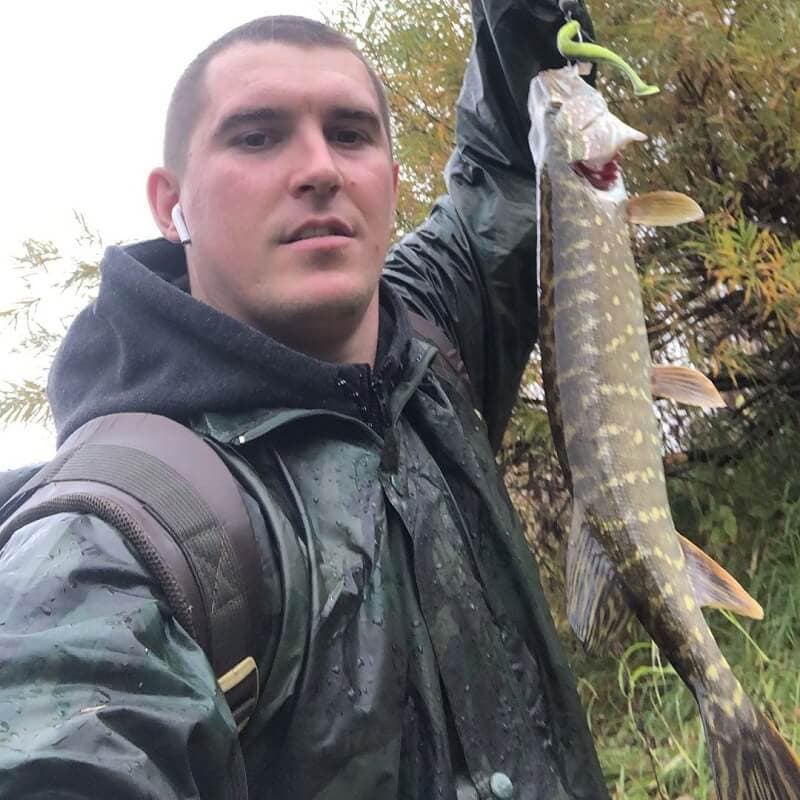Contents
Anglers with experience know that weather conditions, in particular atmospheric pressure, are very important for pike fishing. Less experienced comrades should study this issue in more detail, it is especially worth focusing on the barometer readings.
What is atmospheric pressure?
Atmospheric pressure is the force with which air presses on the earth’s surface and everything on it. This weather condition has a significant effect on most living organisms. Many people suffer from sudden surges in blood pressure, which is manifested by headaches, migraines, and surges in blood pressure.
Fish are also sensitive to this factor, changes in atmospheric pressure on pike biting have a huge impact. For a toothy predator, the ideal indicator is constancy, sharp jumps and drops will force you to sink to the bottom and almost completely refuse any food until the situation is completely normal.
Pressure affects all inhabitants of any body of water. There is no single indicator that is optimal for catching all kinds of fish, each of them will be more active at certain indicators.
| pressure | low | increased |
| who gets caught | it is better to catch a predator, especially large individuals | gives the opportunity to activate peaceful fish |
This pattern works only when the barometer rises or falls gradually. With sharp jumps up or down, the fish simply lies on the bottom and waits for stabilization.
How pressure affects fish
From a school biology course, it is known that an air bubble helps to stay afloat and move perfectly in the water column chosen by the fish, it works like a pillow. It is filled with oxygen, nitrogen and a small amount of carbon dioxide, which is produced by a special gland called the red body. Since there is little blood in their inhabitants, the filling of the bladder occurs rather slowly. With sudden drops, the body begins to work even more slowly, which means that the fish cannot move quickly or fully hunt. She additionally deals with the regulation of gases in her air cushion, and this requires a decent amount of energy.

Without feeding, the fish will not be able to for a long time, but it will not be able to deal with the unfavorable conditions that have arisen. Therefore, until the pressure stabilizes, it goes to the bottom and does not react to practically anything.
However, a gradual decrease or increase in barometer readings can activate the inhabitants of the water area.
Gradual decrease in pressure
It activates predatory fish, before worsening weather conditions, as well as before a sharp jump in pressure, almost all inhabitants of the reservoir try to stock up on nutrients for a long time. Pike perch, catfish, pike, perch go hunting.
Increasing atmospheric pressure
During this period, small representatives of peaceful fish species actively rush into the upper layers of the water in order to capture as much oxygen as possible, which disappears very quickly. The predator at this time prefers to sink to the bottom and wait for more favorable conditions for hunting.
At what pressure will pike bite be excellent?
To maintain energy at the proper level, a medium-sized pike should eat about 10 fish per day, each weighing about 250 g. Based on this, we can conclude that the pike is always in the hunting stage, therefore it reacts to all proposed baits. The main thing is to be able to correctly hold the bait and apply it to the right place.
The optimal pressure for pike fishing is considered to be low and constant. For fishing in autumn or spring, usually the most inclement weather is chosen, it is during this period that it will be possible to get a trophy specimen of a predator.
At what pressure the pike bites have been found out, but other components should not be pushed far away either.
Other weather factors
In addition to atmospheric pressure, other weather conditions also affect pike biting, this should be taken into account before leaving.
Catch a pike with such indicators:
- overcast sky;
- low air temperature, up to +20;
- constant pressure readings for several days;
- little breeze;
- acceptable water clarity, but not ideal.
Light rain showers are ideal. In winter, especially at the end of the season, pike go to the thaw.
On a sunny fine day with complete calm, finding and detecting a predator will be extremely problematic. Usually during this period, he will hide in deep holes, where the ambient temperature will be more acceptable to him.
At what atmospheric pressure is it more likely to catch a pike found out. Other weather factors contributing to the favorable outcome of the fishing trip were not left aside. Study the weather conditions before leaving, then you definitely will not be left without a catch.










